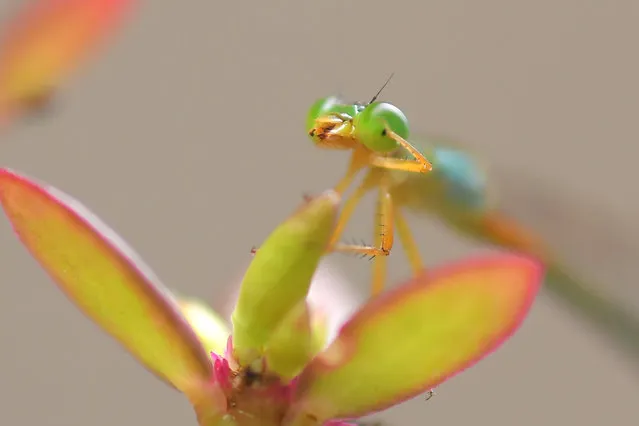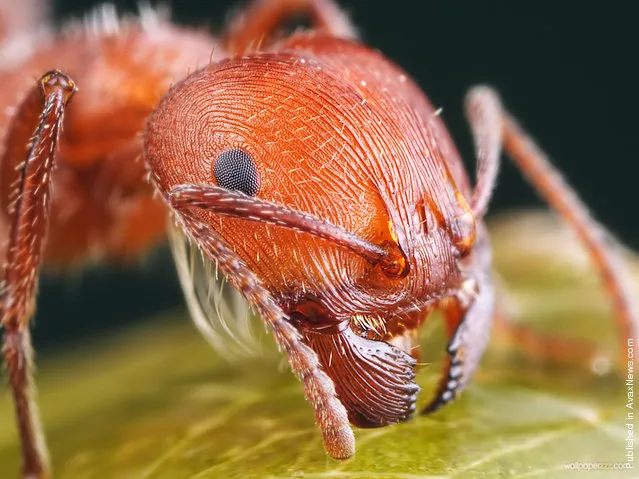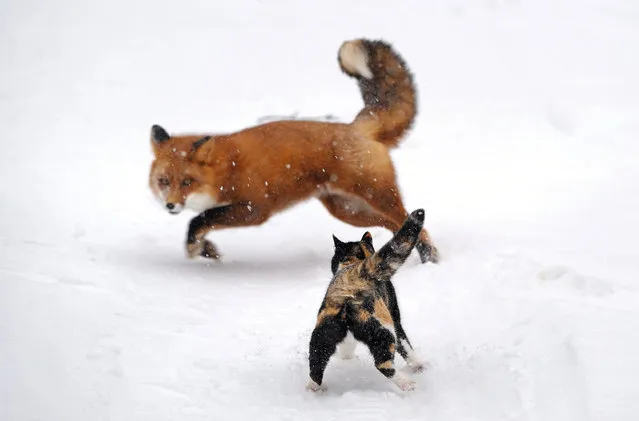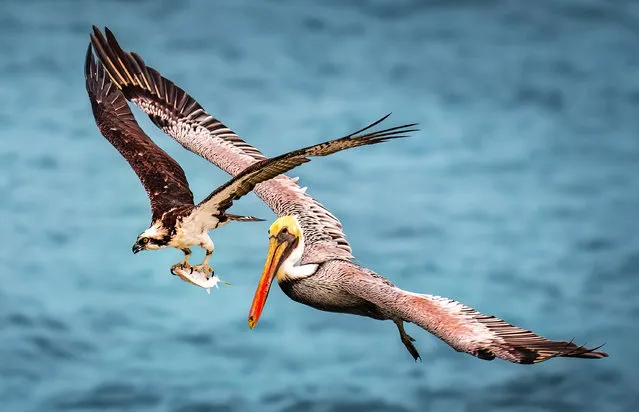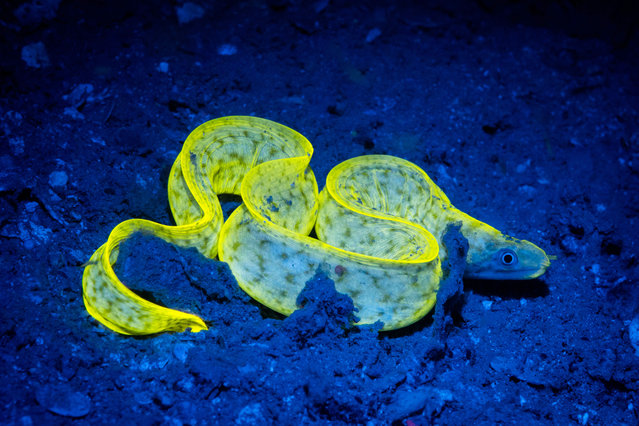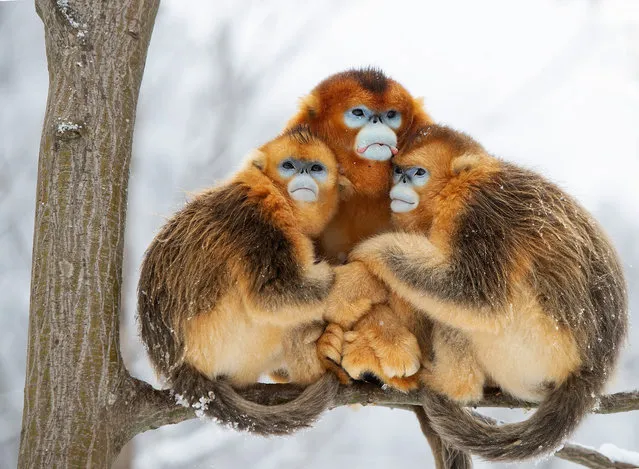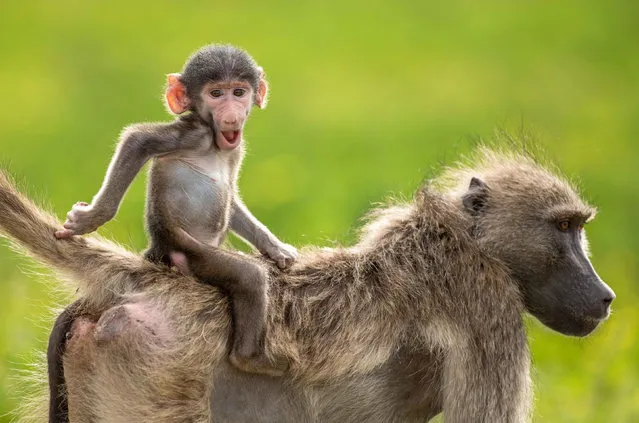
A baby baboon appears to ride its mother like a horse at the Chobe River, in The Chobe National Park, Botswana, Southern Africa in January 2023. Young monkeys often ride on their parent's backs, like this Chacma baboon, for protection. (Photo by William Steel/Solent News & Photo Agency)
22 Jan 2023 05:38:00,post received
0 comments

